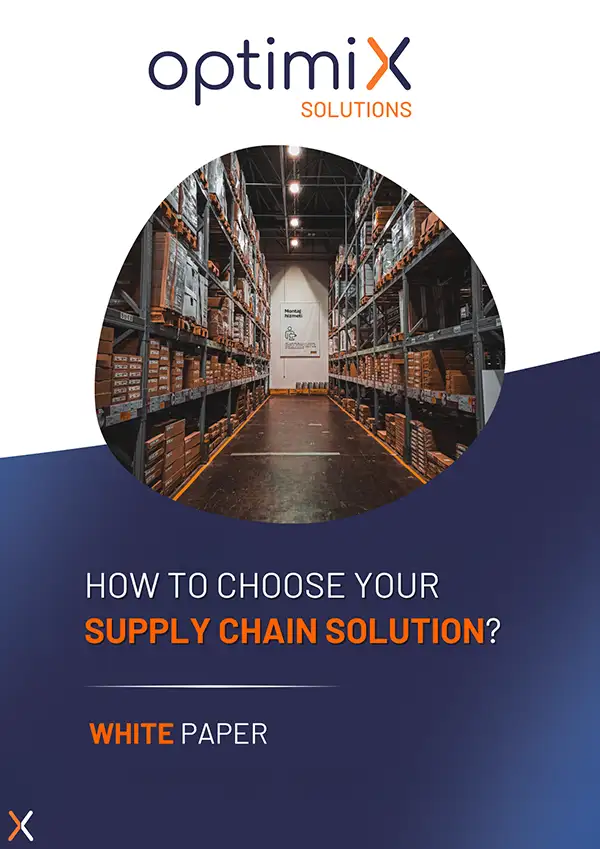In an uncertain economic climate marked by price volatility, supply chain tensions and rapidly changing customer expectations, inventory management is no longer simply a logistics issue. It has become a strategic lever, at the crossroads of financial performance, commercial agility and customer satisfaction.
Whether you’re a retailer, e-tailer, manufacturer or trader, inventory optimization enables you to regain control over an essential variable: your ability to deliver the right goods, at the right time, without excessive downtime or stock-outs.
In this article, we share with you the concrete benefits of good inventory management, followed by best practices for optimize your inventory management
The benefits of stock optimization
Optimizing your inventory doesn’t just mean avoiding stock-outs or emptying an overloaded warehouse.Above all, it’s a proactive approach to management that brings direct benefits. Some benefits of inventory optimization for your company:
- Cost reduction Less overstocking, markdowns, storage costs and waste.
- Improved service rate Better availability of goods, fewer cancelled orders, better customer service.
- Improved cash flow Dynamic management frees up liquidity and boosts investment capacity.
- Operational agility Simplified supply management processes, better coordination between purchasing, sales, logistics and warehousing.
In short, successful optimization transforms stock, often perceived as a burden, into a strategic asset within the supply chain. strategic asset within the supply chain.
Our best practices for successful stock optimization
1. Adopt a segmentation logic: ABC, XYZ or made-to-measure
Not all products are created equal. For a good inventory managementit is essential to segment each item according to its economic value and regularity of consumption.
ABC method
This method classifies references according to their weight in stock value:
- A 20% of items representing 80% of value. To be followed closely with a rigorous inventory control.
- B medium importance.
- C Many but little financial impact. More flexible management possible.
This allows you to concentrate your efforts on critical productswhile reducing costs on others.
XYZ method
Here, we classify items according to demand predictability :
- X stable consumption ➝ ideal for automatic automatic replenishment.
- Y variable consumption.
- Z irregular consumption ➝ store with caution.
By combining ABC and XYZ, you can adapt your stock levels, your safety stocks and order thresholds according to the profile of each product. An essential lever for avoid stock-outs while reduce dormant stocks.
2. Automate replenishment thresholds
Switching to dynamic logic means defining control points based on actual consumption, seasonality and delivery times. With the help of a inventory management softwareyou can :
- Generate automatic alerts.
- Just-in-time inventory replenishment.
- Adjust order quantities to maintain sufficient stock.
This reduces human error and minimizes stock-outs.
Managing your business means tracking the right indicators:
- Stock rotation A key indicator for avoiding dormant stock.
- Average stock level To adapt warehousing and stock value.
- Obsolescence rate : especially critical for perishable products.
- Inventory status Inventory: to be checked regularly with rotating inventories.
Good inventory tracking improves data reliability and reduces error-related costs.
4. Promote interdepartmental collaboration
Stock decisions must be based on a cross-functional cross-functional vision purchasing, sales, logistics, production. Visit stock manager needs reliable information to coordinate stock availability with sales forecasts and supply capacity. This helps avoid both overstocking and stock-outs.
5. Digitizing processes and limiting manual tasks
Digitization is a fundamental lever for manage your inventory reliably and smoothly. By centralizing data with a inventory management softwareWith our inventory management software, you eliminate the risks associated with scattered Excel files, poorly recorded receipts or orders placed without visibility.
- Barcode or RFID labelling for reliable physical inventory.
- Automated input and outputwith complete traceability.
- Real-time inventory controlWith our real-time inventory control system, you can adjust your supplies to demand.
- Tracking stock movements on all your sites or depots.
The objective : to have a controlled, easily accessibleeasily accessible, while reducing handling costs and improving data reliability.
Choose smart Supply Chain is fully in line with this logic. It is a SaaS tool for advanced inventory managementdesigned to automatically integrate your procurement, consumption and forecasting data.
Thanks to its safety stock calculation algorithmsintelligent alerts, and its ability to process multi-source data (ERP, e-commerce, production), it enables :
- Reduce unnecessary inventory without risking stock-outs.
- Automate order placement according to the optimal order point.
- Maintain a target stock level adapted to seasonal variations and unforeseen events.
- Visualize stock levels at a glance stock levelsor critical areas at a glance.
In a nutshell, Optimix XFR transforms your supply and inventory management into a smooth, predictive, data-driven process.
6. Rotating inventory
The rotating inventory allows you to :
- Continuously monitor warehouse stock levels.
- Correct discrepancies quickly.
- Reduce logistics-related disruption.
This method is particularly useful for fast-moving or high-value products .
7. Adapt your strategy to your business
Your management method also depends on your sector:
- In e-commerce, the available stock must be synchronized with all sales channels.
- In trade or industry, you need to take into account supplier lead times, production batches and the management of supplies or spare parts.
A well-chosen management solution will help you manage your finished goods inventory as well as your raw materials.
Moving from passive management to a controlled strategy
Inventory optimization is no longer a matter of simple logistical common sense: it’s a strategic discipline. strategic disciplineat the crossroads of financial performance, commercial responsiveness and operational robustness.
By combining intelligent segmentation, digital tools, rigorous tracking of indicators and inter-departmental collaborationWith these tools, it’s possible to move from reactive management to an anticipatory, data-driven approach.
Companies that successfully manage their inventory as a strategic asset gain in competitiveness, profitability and customer satisfaction. And with solutions like Optimix XFRthis transformation is now within the reach of all organizations, from SMEs to major groups.
Better management also means better decision-making. And in an uncertain world, this is an essential strength.








